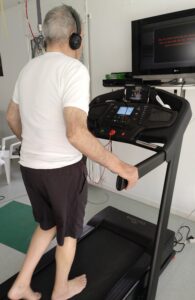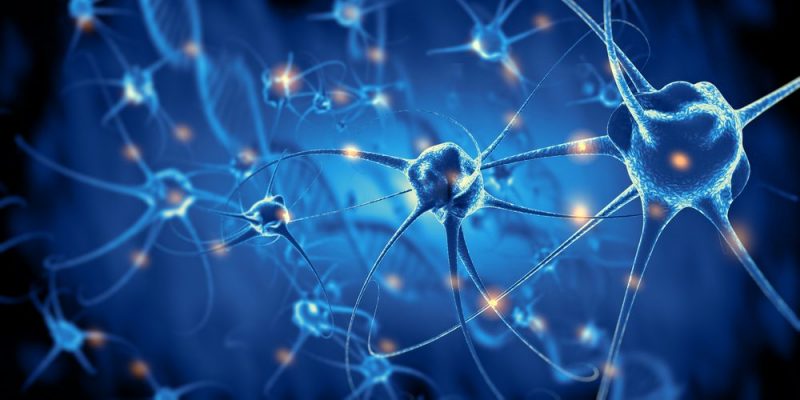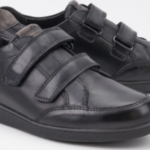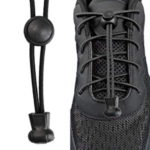Sorry, this entry is only available in European Spanish and Catalan.
PHYSICAL EXERCICIES STIMULATES NEUROPLASTICITY
We know that physical exercise is favorable for our health. Physical health by improving all our systems, the circulatory, respiratory, digestive, our muscles and joints. And also our brain since in several studies the effect of physical exercise on our mental health and our cognitive abilities has been evidenced. All this thanks to its influence on synaptic plasticity.
Neuroplasticity is understood as the ability of the nervous system to change its morphology or functionality through development, due to experience or after being affected by an injury (Kandel, Schwartz and Jessell, 2001).
The brain has several mechanisms to guarantee this plasticity. Among them are the growth of dentrites and axons (parts of neurons), regulation of neurotransmitters (substances that are transmitted between neurons), activation of neuronal connections that were inhibited, regeneration, which corresponds to denervated branches that grow back and join with other cells and long-term potentiation.
The latter is thanks to the BDNF protein (brain-derived neurotrophic factor) that is linked to synaptic plasticity and can be generated by stimulating physical exercise.
Continuous aerobic physical exercise activates neurogenesis, the creation of neurons, in the hippocampus, an essential area for memory and learning.
Physical activity helps to modulate stress and reduce levels of anxiety that can influence our daily lives. We can react better to stressful situations. With physical exercise we release a series of hormones and neurotransmitters that facilitate us to experience a feeling of well-being and satisfaction. Physical exercise improves executive functions in patients who have suffered brain damage.
At the Neurorehabilitation Clinic we include the practice of physical exercise in all our treatments. It not only makes the patient more involved in their recovery but also as a stimulus to facilitate the neuroplasticity processes necessary to recover mobility, balance, neurocognitive and language abilities.
Among our recommendations is the practice of a moderate aerobic physical exercise adapted to the patient’s abilities through the practice of gait, on treadmill or surface and the use of static bicycles of legs or arms.
Therapeutic exercise in physiotherapy
Many of the neurological patients, whether due to cerebellar ataxia, stroke, Parkinson’s disease or other, have impaired balance and postural control. The rehabilitation and treatment of these disorders and alterations is essential for the patient to regain control of his movement and independence and functional autonomy. In some cases, we not only talk about recovery, but also in maintenance, since within neurological diseases we also include neurodegenerative diseases, with which the objective is not always to recover but also to prevent the deterioration and progression of the motor sequelae of the disease.
In therapy sessions aimed at recovery of balance, the factors that provide stability and body orientation should be influenced. That is why we incorporate therapeutic exercises in physiotherapy sessions that promote the correction of the alignment of the different parts of the body and these in space.
It is important to select the correct exercises that encourage the patient to maintain the position of the body within stability limits and always thinking about the patient’s motor needs. In other words, find out which muscle groups should be strengthened (e.g., enhance back extensors in a patient with multiple sclerosis presenting a predominance of the flexor posture), which motor strategies should be encouraged and design an appropriate task (eg, extension of everything the body). Once each sensitive, motor and perceptive component of the task has been worked on (eg trunk extension, arm extension, ability to keep the body in an upright position etc.), a motivating activity for the treatment session must be incorporated into the treatment session. patient at the end of the session (ex .: organize a high shelf).
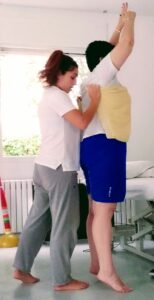
Healthy nutrition. Healthy brain
This weekend, the Neurorehabilitation Clinic has offered its patients an activity to promote healthy eating habits. Nina Izquierdo, a nutritionist with extensive experience has made a talk in which she has updated us on the basis of healthy eating, tips such as: avoid sugary drinks, a source of calories usually with little nutritional value; use healthy oils, extra virgin olive oil in our meals; Prioritize fresh plant foods over those of animal origin; Eat naturally low-fat foods such as fruits and vegetables instead of ultra-processed foods that are usually full of unhealthy ingredients.
We have also been able to deepen important aspects to improve the management of some neurological diseases. If you suffer from Parkinson’s disease you should eat foods rich in calcium, magnesium and vitamins D and K. Apart from general dietary recommendations, patients with multiple sclerosis should know that the microbiota is part of the development and functioning of the human immune system. Recently it has been proven the importance of certain bacteria of the intestinal flora, in modulating immunity. So the feeding and intake of probiotics plays an important role in the therapy of these patients.
If you have suffered an Stroke and take anticoagulants, you should be especially careful with your diet, try not to consume foods rich in vitamin K such as vegetables with green pigmentation (broccoli, lettuce and spinach) garlic and avocado (among other foods) since alter the effect of anticoagulants. We recommend that you consult your nutritionist or referring doctor and that they develop the best diet for you.
At the end of the talk we have tasted and prepared healthy and very appetizing options to vary and improve our diet. We have all come out very motivated to explore new foods and make changes in our diet.
Assessment in neurological physiotherapy
Most neurological conditions, such as stroke, multiple sclerosis, Parkinson’s disease or spinal cord injury, have as a consequence sensitive and motor involvement of your physical condition. For the rehabilitation of the alterations that the patient presents, it is advisable to carry out a previous assessment that provides information to the clinical diagnosis, helps to classify, graduate and measure the evolution of the patient as well as the results of the therapies proposed by the physiotherapy and occupational therapy service from the neurological rehabilitation center.
In the process of assessment in physiotherapy and occupational therapy, there are usually tests, tests and scales developed by experts in neurological rehabilitation. There are also some technological and robotics devices that provide objectivity to the assessment of the neurological patient.
The robotic evaluation is defined as the evaluation of the physical condition (sensorimotor function) of the patient by the interpretation of kinematic and kinetic data of sensors integrated in robotic mechanisms. These sensors provide information related to trajectory, speed, time, accuracy, etc. At the Barcelona Neurorehabilitation Clinic, we perform complete measurements using specific methods with clinical scales such as the use of new technology such as pressure platforms, motion analysis and video posture and sensors among other robotic systems.
10 Principles of Neural Plasticity to optimize the intervention in neurorehabilitation
- Use it or lose it
Decreased activation of specific brain areas can lead to functional degradation. Encourage the patient to perform the movements that he can do on his own and assist the movement that he cannot perform. Since it has been shown that the decrease in use or performance of a movement can cause a loss of this incipient ability to perform a movement.
- Use it and improve it
The training of a specific brain function can lead to the improvement of that function.
- Be specific
The nature of the training experience dictates the nature of plasticity. That is, if we want to cause improvements in the activation of patients’ motor cortex, we must be specific in the design of interventions to ensure the acquisition of new skills or the acquisition of lost skills.
- Repeat
To induce plasticity, enough repetition is necessary. The repetition of an activity tends to cause lasting neuroplastic changes that facilitate learning stability. The use of new technologies provides a great help at this level, since they allow the patient to repeat a desired movement many times.
- Intensity
To induce plasticity, intense training (amount of activity per period) is required. 100 repetitions of an exercise are better than 40. However, a negative side effect that worsens the function has been described if an amount of extreme use is made in the vulnerable period after the injury after a stroke. There is an increase in the extiotoxicity of vulnerable tissues that involve the primary lesion. The intensity should be adapted to the patient’s level to obtain optimal results.
- Duration of therapy
Different forms of plasticity occur at different times. Functional changes in synapses become, over time, structural changes, outbreaks of neuronal growth and formation of new synapses, leading to cortical reorganization. Therpy must be durable enough to generate neuroplasticity.
- Motivation
The experience must be remarkable and innovative enough to induce plasticity. We must generate emotion during treatment as emotions modulate memory consolidation.
- Age
While it is true that plasticity occurs more easily in young brains, it does not mean that older adults do not have these abilities. What happens is that they need to compensate by activating more brain areas to maintain good functionality.
- Transfer
Plasticity in response to a training experience can improve the acquisition of similar behaviours. The best way is to integrate everything learned in therapy, into the activities of the daily life of patients, so that there is frequent use of skills and progressively improve the performance of tasks.
- Beware of maladaptive learning
In the initial stages after the injury, compensatory behaviours, for example, hight trunk movement to replace loss of upper limb function, interfere with the relearning of lost function. Thus, they limit the acquisition of movements in the upper limb and reduce the work requirement of the arm. In more advanced phases, in many occasions the compensations allow to integrate the affected limb in the activities of the daily life, integrating the capacities learned in the therapy and improving the performance of the patients.
In the design of the neurological rehabilitation sessions, these principles should be considered to improve the motor learning of patients, promote neuroplasticity and achieve better treatment results.
Kleim J, Jones T. Principles of experience-dependent neural plasticity: implications for rehabilitation after brain damage. Journal of speech, language and hearing research. 2008; 51: S225-S239.
Gait speed with Functional Electrical Stimulation
Functional Electrical Stimulation, known as FES, is a therapeutic approach that uses a small electrical device to produce electrical currents and stimulate the peripheral nerve by means of adhesive electrodes placed on the skin. The applied electrical stimulus produced a muscular contraction that will help in the execution of the proposed task and therefore it is said “functional”.
Example: while walking, I use an electrical device that produces muscle contraction in the foot so that it rises from the ground at the moment of taking the step
This example is quite common among neurological patients, the equine foot due to nervous system injuries such as stroke and cranio-encephalic trauma. But it is among patients with spinal cord injury and multiple sclerosis that this device can act more significantly in reeducation and correction of gait.
In 2017, colleagues from Belgrade have published a study on the introduction of these devices in the therapy of hemiplegic patients by stroke. The aim of the study was to assess the additional effects that the introduction of Functional Electrical Stimulation could bring in the sessions of physiotherapy, especially in the aspects related to the rehabilitation of the march of hemiplegic patients by stroke. Although the study has only sixteen patients, they have observed that the eight patients who performed sessions of 30 minutes of walking with Functional Electrical Stimulation in addition to physiotherapy, improved the speed of walking, compared with the other eight patients they only performed physiotherapy. Apart from this change, other small changes have been observed in the way of running, mobility and autonomy in the activities of daily life.
Dujovic SD, Malesevic J, Maesevic N, Vidakovic AS, Bijelic G, Keller T, Konstantinovic L. Novel multi-pad functional electrical stimulation in stroke patients: A single-blind randomized study. NeuroRehabilitation. 2017;41(4):791-800
What footwear should I wear after a stroke?
After having suffered an Ictus, it is possible to present several alterations such as speech alterations, memory and attention problems, sensory and sensory changes, alteration of movement among other less common ones.
Related to the alterations of the posture and of the movement, a great alteration is in balance and march above all when the patient loses the motor control of the leg and foot (lower extremity).
From the point of physiotherapy, we know that the care of the foot is fundamental since it is the part of the body that supports the whole body, it is the body area that connects the body with the floor, in summary, it is the support surface. Sometimes, for ease and agility, caregivers, family members and the patient itself usually opt for the use of comfortable shoes such as slippers or slippers, however it is not the most recommended type of footwear. Using some type of splint in the foot or not, it is advisable to use a well-closed shoe, such as a sports shoe.
One of the most named studies on this subject reports to the year 2010 to Age and Ageing magazine. This study summarizes the information on the influence of footwear on the balance and gait of stroke patients and concludes that the use of closed shoes such as the sports shoe increases gait speed and increases the step length compared with other footwear such as flip flops, slippers or barefoot.
To make it easier for patients to put on and take off their shoes, which are often limited by the lack of skill and movement, there are several alternatives such as learning to tie the laces with one hand, using elastic laces with zippers or zippers and strong velcro. It is also important that the footwear is stable (eg, type of material) and that the sole is wide that allows freedom of movement of the toes of the foot. We understand that the selection of footwear depends on person for person and therefore it is advisable to take into account the opinion of the professional whether physiotherapist or podiatrist.
Ng H, McGinley JL, Jolley D, Morris M, Workman B, Srikanth V. Effects of footwear on gait and balance in people recovering from stroke. Age Ageing. 2010; 39(4):507-10
